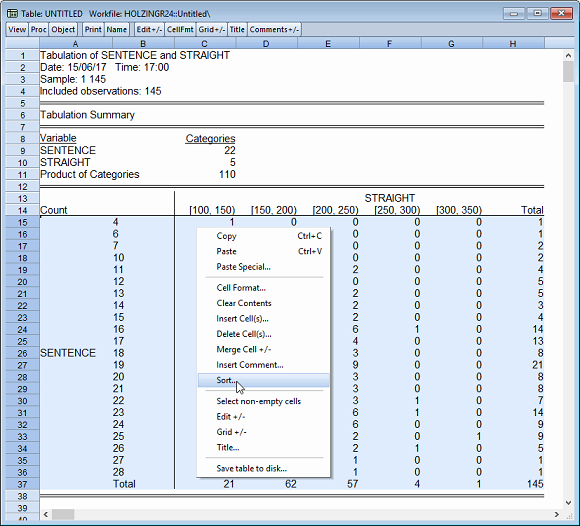
(1) number of observations: It must be greater than the ‘ number of. Below are the some of the pre-requisite conditions which must satis I have a question regarding the interpretation of the coefficients in an ARDL model. The model shows a long run cointegration as bound test F statistics is higher than the critical value.
#Eviews 10 eviews 9.5 difference free
5 ( which is a free version), stata 14 and Eviews 8 and applied ADRL bounds model but the Microfit produced and ARDl (0220100) and ARDL(1220100) for both stat and Eviews please i am confuced which results is more relaible Following are the results.

In this article, we introduce the R package dLagM for the implementation of distributed lag models and autoregressive distributed lag (ARDL) bounds testing to explore the short and long-run relationships between dependent and independent time series. Hence the interpretation that a 1% increase in x increases the dependent variable by the coefficient/100. In EViews, this implies that one can estimate ARDL models manually using an equation object with the Least Squares estimation method, or resort to the built-in equation object specialized for ARDL model estimation. ARDL Estimation in EViews 9, featuring bounds testing, cointegrating and long run forms, and automatic lag selection. Compute, plot and interpret the correlogram for the level of real GDP. The note basically says that: Eviews – by hands Investigate the presence of a long run relationship among m, y and rp with ARDL(lag length of 4, quarterly data) (assume an intercept and no trend). Then do the same as (1) and (2) using your classification variable.Non of the variable should be stationary at second difference.
#Eviews 10 eviews 9.5 difference series
on the YEAR series to create an classification variable for your groups. Smpl ypermean = x1permean = x2permean = if = pereq.ls ypermean c x1permean x2permean Smpl ycxmean = x1cxmean = x2cxmean = if = 1Įquation cxeq.ls ycxmean c x1cxmean x2cxmean If this is the case, an alternative way to do it is to create new workfile pages and then save the means to those pages. Note that in these two cases, you are replacing every observation with the relevant means and then subsampling when running the regression so that the output labeling may not be what you want.

With only two variables it's easiest to do it in the same workfile page. It would be much appreciate if anyone can correct me when I am wrong. ' get starting values from binomial logitĮquation eq2.binary(d=l) dd2 c core stations carparks gfa age dist_mtr belt cycle1 cycle2ī2 = eq3.binary(d=l) dd3 c core stations carparks gfa age dist_mtr belt cycle1 cycle2ī3 = eq4.binary(d=l) dd4 c core stations carparks gfa age dist_mtr belt cycle1 cycle2ī4 = eq5.binary(d=l) dd5 c core stations carparks gfa age dist_mtr belt cycle1 cycle2ī5 = eq6.binary(d=l) dd6 c core stations carparks gfa age dist_mtr belt cycle1 cycle2īut there is a syntax error in coef (10) b2. I tried to modify the command from an example in EViews, and they are as follows: I attempted to estimate a multinomial logit model, with dependent variable being type = 1,2.,5 and explanatory variables being core, stations, carparks, age gfa, dist_mtr, belt, cycle1 & cycle2.


 0 kommentar(er)
0 kommentar(er)
